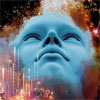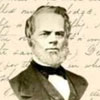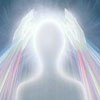Dreams That Heal
 by Rosemary Ann Guiley
by Rosemary Ann Guiley
In ancient Greece a man who has been chronically ill is on the most important journey of his life. Agares has been granted permission to make a pilgrimage to Epidaurous, one of the largest healing temples in the known world. Actually, it is a dream-healing temple, for while Agares is there, he will try to dream his healing. No earthly doctor has been able to help him. This is his last hope.
Agares is part of a group of pilgrims who are all seeking dream healing. They take offerings of coins, food, and animals to the temple. They are amazed by Epidaurous. It is like a small city, with numerous buildings. There are houses for the dream priests, dormitories for the pilgrims, baths, and a huge outdoor amphitheater for lectures and entertainment. The pilgrims are shown their tiny cells, where they will sleep on mats and dream.
After a ritual of purification that includes bathing and putting on clean clothing, Agares meets with a dream priest and explains his illness. The priest listens thoughtfully, and then instructs him for dreaming. Agares is to light a certain oil lamp and recite certain prayers asking Asklepios, the god of healing, to come to him in his dreams and heal him.
The rest of the day and evening are spent in prayer. Before he retires, Agares is given an herbal drink to help him sleep deeply. He drinks, makes his final prayer, and then sleeps.
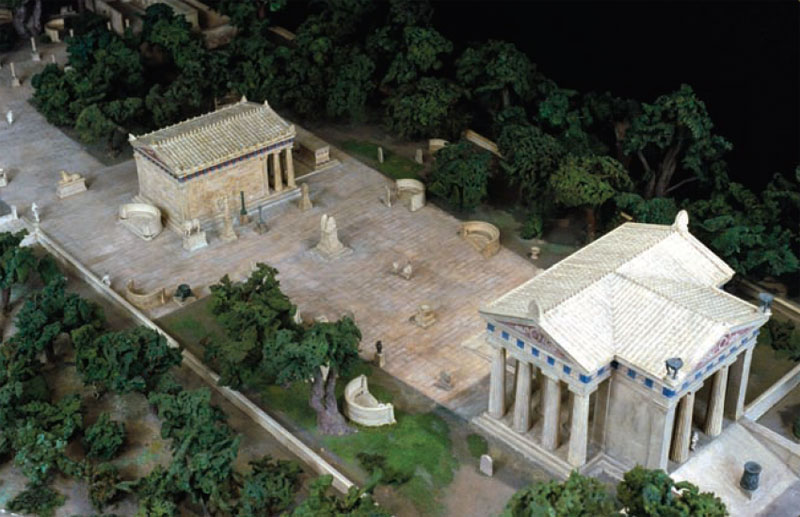 A reproduction of Epidaurous shows the stadium (left) and the main temple (right), which was dedicated to Asklepios, the Greek god of medicine and healing. Ailing people would discuss their illness with a priest here and then sleep overnight on couches. The next morning the temple priests would interpret their dreams for a cure.
A reproduction of Epidaurous shows the stadium (left) and the main temple (right), which was dedicated to Asklepios, the Greek god of medicine and healing. Ailing people would discuss their illness with a priest here and then sleep overnight on couches. The next morning the temple priests would interpret their dreams for a cure.
He dreams that he is visited by a glowing old man carrying a snake entwined staff, and accompanied by a dog. The old man touches him but does not speak.
The next morning Agares meets with the priest and relates his dream. The priest tells him he has been gifted healing by the touch of the god. He will go home restored. Agares dictates a testimony, which the priest engraves on a lead tablet that will remain at the temple to inspire other pilgrims and give them hope.
Dreams have been valued around the world as a source of healing for thousands of years. In the ancient world, dreams had three primary purposes: to forecast the future, to provide the guidance of the gods, and to aid healing. Records show that all kinds of ailments and conditions were cured with the help of dreams, from chronic illnesses to blindness and lameness.
The dreaming undertaken by Agares is a process called incubation. A dream with a specific purpose is incubated, or birthed, through ritual, request, and prayer. The best place to undertake healing dream incubation was at one of many sacred dream temples scattered throughout the classical world.
Dream healing was practiced in ancient Egypt, too. The greatest temple was at Memphis, near Cairo. It was dedicated to the god of healing, Imhotep, who was a mortal who lived during the Third Dynasty (circa 2980 BCE to 2570 BCE). Imhotep was highly regarded in his time. He was a physician, a skilled architect, and an astrologer to the priests of the sun god, Ra. After death, Imhotep was elevated to the status of god of medicine.
By the first millennium BCE, dream incubation was a widespread practice in Egypt. The Greeks, who borrowed heavily from the Egyptians, also valued dreams, whose healing powers were directed by Asklepios.
Dream healing was absorbed into early Christianity and was given over to angels rather than the pagan gods. Specifically, the archangel Michael took the place of Asklepios and other deities. Michael was petitioned for dream healing by Christian pilgrims at his own sacred sites. The most important of these was a church at Eusebios, near Constantinople. These temples were closed over the centuries as dreams lost their importance in Christianity.
Dreams have been used by other cultures around the world for healing for centuries. The ancient Chinese realized that dreams played an important role in the diagnosis and maintenance of physical health. The understanding of dreams is deeply embedded in Taoism, a system of mysticism and philosophy, and the only native religion of China.
The ancient Chinese compiled and published dream dictionaries and articles, dream diaries, and paintings and woodcuts of dreams in progress. Magical spells against nightmares and bad dreams proliferated. Dream incubation was widely practiced.
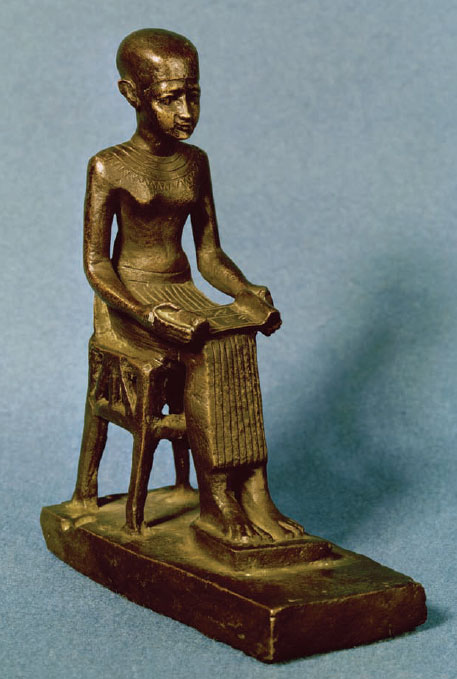 A bronze statue shows Imhotep, the Egyptian god of healing, holding an open papyrus scroll.
A bronze statue shows Imhotep, the Egyptian god of healing, holding an open papyrus scroll.
Like others in the ancient world, the Chinese had a dream god, who could be petitioned to grant certain types of dreams. The Shihlei t’ung-pien (Compendium of Literary Allusions) refers to a dream god called Chih-li, a name which probably was adopted from foreign sources. Chih-li was invoked for productive dreaming by reciting a mantra or charm seven times before sleep.
Dream Healing Today
Healing within dreams still occurs today. Instead of being visited by a god, a dreamer might be treated by a modern dream doctor. The images have changed to fit the times, but the purpose of them remains the same. In some healing dreams, people say they are bathed in radiant light that seems not of this world. Or, an angel visits them and touches them. In still other dreams, dreamers are given information via direct messages or in symbols that tell them how to improve healing that is taking place, such as from surgery or an injury.
Medical experts do not know how and why dream healing happens. The ancients believed in visits from the gods during dreams, and so it made sense to them that the gods did the healing. Modern experts think that dreaming may release natural healing powers that exist within the patient.
Still others believe healing dreams to be a combination of inner healing aided by the divine. For reasons we do not understand, these forces seem to be more effective during dreaming sleep than during waking consciousness.
Why doesn’t everyone who is sick have a healing dream? No one knows the answer.
The Doctor Is In: Astral Travel Walk-ins Welcome
Asklepios was the reigning healer of the ancient dream world. People who were ill would ask him to heal them in their dreams—or at least tell them how they could be healed. Half god, half mortal, Asklepios lived in the dreamy astral world of the gods. To see him required dream astral travel. This was accomplished through ritual and prayer, often at a special, secluded place.
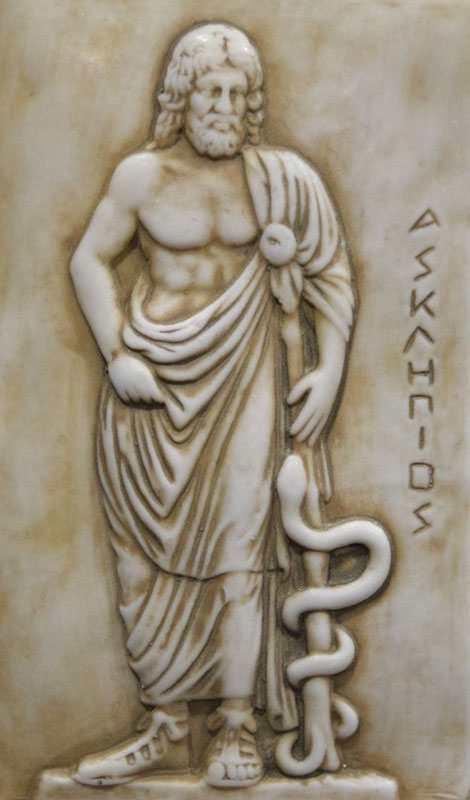 Asklepios could heal because he had been gravely wounded and had healed himself. The dream healer may have been based on a real person by that name—Asklepios means “unceasingly gentle” in Greek—who lived around the eleventh century BCE.
Asklepios could heal because he had been gravely wounded and had healed himself. The dream healer may have been based on a real person by that name—Asklepios means “unceasingly gentle” in Greek—who lived around the eleventh century BCE.
According to myth, Asklepios’s mortal mother, Coronis, was unfaithful to her husband, the god Apollo. Outraged, Apollo sent his sister, Artemis, to kill Coronis by shooting her with an arrow. Her body was placed on a funeral pyre. Before the body burned, Apollo snatched the baby Asklepios, fathered by Coronis’s lover, from her womb. He gave Asklepios to the centaur Chiron, who raised him in the mountains and taught him the healing arts.
Asklepios became such an excellent healer that he could even raise the dead. This threatened the immortal gods, so Zeus struck him down with a thunderbolt and killed him. Zeus placed him in the sky, where he became the constellation Orion.
In the dream world, Asklepios became even more popular and powerful as a healer. At the peak of his cult, about 400 dream temples were built to him. He was also worshiped in sacred groves and caves. He held his office hours at night, seeing patients who journeyed to him through the pathways of the dream world.
How did a person know for certain he met Asklepios in his dreams? The healer had a specific appearance. He looked like an old man with a beard, carrying a staff entwined by a single snake. He was sometimes accompanied by a dog or by a boy dwarf named Telesphorus. The snake symbolized regeneration, wisdom, and healing. The dog symbolized death and rebirth. The dwarf symbolized fertility.
The best healing occurred if a person was touched by Asklepios in a dream. Next best was a prescription: instructions for healing. Sometimes the instructions had to be interpreted by dream priests. Testimonies about miraculous dream healings were recorded at many of the god’s temples.
Asklepios still appears in dreams today. Sometimes people do not recognize who he is. Sometimes people in need of healing dream of an old man with a snake-entwined staff and a dog: Asklepios, still on the job in the astral realm.
Dreaming Diagnoses
In addition to aiding healing, dreams also forecast illness before actual symptoms show up in the body. The diagnostic powers of dreams were known to the ancients, including the dream-savvy Greeks.
The famous Greek physician Galen, who lived in the second century BCE, had a dream healing that influenced his medical practice. At age 27 he suffered a potentially fatal condition from an abscess under his diaphragm. He went to a dream temple devoted to Asklepios to dream a cure. He had two dreams in which he opened an artery between the thumb and forefinger and let it bleed until it stopped naturally. He awakened knowing this was the cure. He performed this procedure on himself, which drained his infection, and he was healed.
During the course of his career, Galen performed many operations on his patients based on information obtained from dreams. He said he had saved many lives as a result. His own experience made him a believer in the diagnostic and healing powers of dreams.
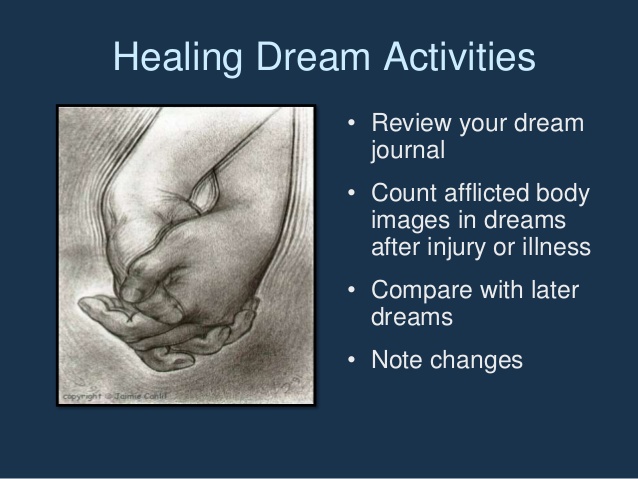 More recently, in the twentieth century, the psychologist Carl G. Jung recognized diagnostic dreams in some of his psychotherapy cases. Like the Greeks, he called them prodromal dreams, from the Greek term prodromos, or “running before.” Jung described cases in which patients had dreams alerting them to life-threatening illnesses before they knew they were sick.
More recently, in the twentieth century, the psychologist Carl G. Jung recognized diagnostic dreams in some of his psychotherapy cases. Like the Greeks, he called them prodromal dreams, from the Greek term prodromos, or “running before.” Jung described cases in which patients had dreams alerting them to life-threatening illnesses before they knew they were sick.
He noted that some patients who dreamed of destruction or injury to horses—an archetypal symbol of the human body—later were shown to be in the early stages of serious illness, such as cancer. In at least one case he documented, the illness was caught early enough to be treated successfully.
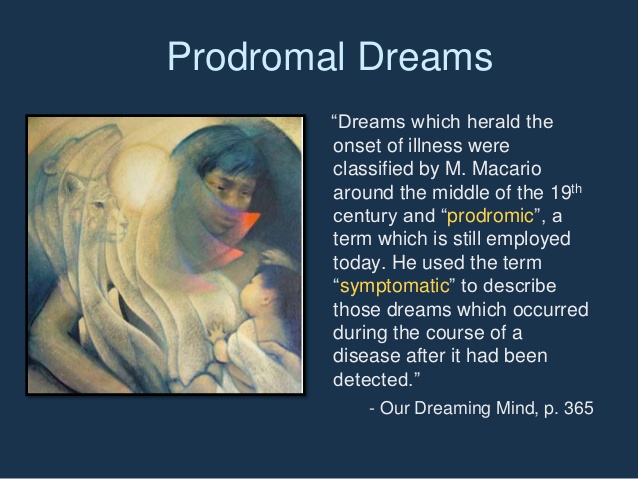 In his book Healing Dreams, author Marc Ian Barasch tells how his cancer of the thyroid was first revealed in disturbing and bizarre dreams. In the dreams, he was chased by an axe murderer trying to decapitate him and was stared at by the figure of Death. A number of his dreams had a neck theme: primitive tribesmen stuck long needles into his “neck-brain”; a World War II bullet was lodged in his neck and removed by a Chinese surgeon; and he found himself crawling about a Mayan “necropolis,” a temple to the dead.
In his book Healing Dreams, author Marc Ian Barasch tells how his cancer of the thyroid was first revealed in disturbing and bizarre dreams. In the dreams, he was chased by an axe murderer trying to decapitate him and was stared at by the figure of Death. A number of his dreams had a neck theme: primitive tribesmen stuck long needles into his “neck-brain”; a World War II bullet was lodged in his neck and removed by a Chinese surgeon; and he found himself crawling about a Mayan “necropolis,” a temple to the dead.
These and other dreams caused Barasch to seek medical help earlier than he might have otherwise, possibly saving his life. The doctor at first was skeptical about the dreams and reluctantly ordered tests. The tests revealed early stages of cancer in the thyroid gland (also called the “neck brain”), which is near the larynx.
Diagnosis by dreams is valued in traditional Chinese medicine, which holds that dreams, pleasant and unpleasant, are produced by imbalances in the body. Thus, by understanding the images and symbols in dreams, one could know the state of one’s physical and mental health and gain understanding on remedies for correcting the imbalances. For example, deficiencies in the vital organs produce specific dream images, such as a depleted heart produces dreams of flames, hills, and mountains, while depleted lungs yields dreams of flying and things made of gold and iron.
Unlike traditional Western medicine, which separates mind and body, Chinese medicine makes no clear distinction between the two.
Paying Attention
Dreams heal more than physical ailments—they also heal emotional wounds. People who are devastated by serious loss often find powerful healing help in their dreams. For example, the following dream helped a 37-year-old woman gain control over severe emotional turmoil in her life. Her father had died, she was experiencing profound grief, and her marriage was in trouble. She felt as though she was losing her sanity, and that she should give up on everything. Then one night she had a dream that helped her recover enough balance to weather the emotional upheaval:
As I fell asleep, I heard several musical voices calling my name, and I felt a sensation of floating in complete comfort. I saw a beautiful star field, and then a strand of stars separated from the rest, coming toward me. I felt many hands place this beautiful necklace around my neck in a gesture of blessing. I felt a profound sense of love, encouragement and acceptance. I slept well through the night and had the best rest I’d had for many weeks. The depression was gone the next morning and with it the fear and anticipation of panic/anxiety attacks: I have not had one since that night.
Everything in my life did not become “perfect” overnight, but I have regained my self-esteem, and a sense of real security and peace. I often think about that dream, and feel certain that I am loved and cherished by the Creator of that necklace. I know I am wearing it even now—a billion carats worth of stars.
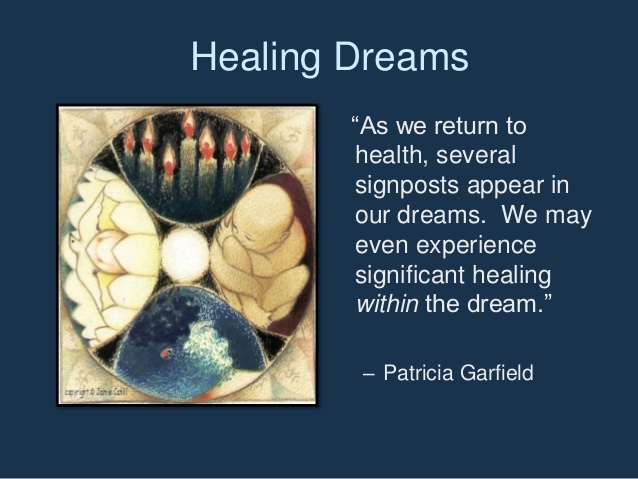 Deriving emotional benefit from a dream is different for every person, depending on the personal meanings associated with the symbols in the dream, the emotional state of the dreamer in waking life and in the dream, and the personal interpretation given to the dream.
Deriving emotional benefit from a dream is different for every person, depending on the personal meanings associated with the symbols in the dream, the emotional state of the dreamer in waking life and in the dream, and the personal interpretation given to the dream.
Excerpt from Dreams And Astral Travel
Posted in Health, Lucid Dreaming, Spiritualitywith comments disabled.



